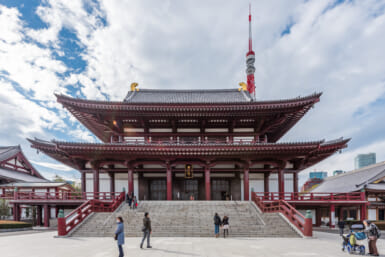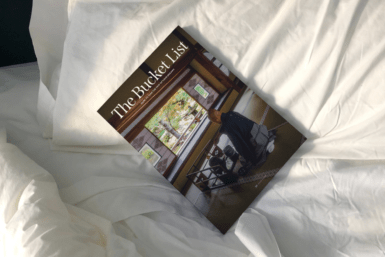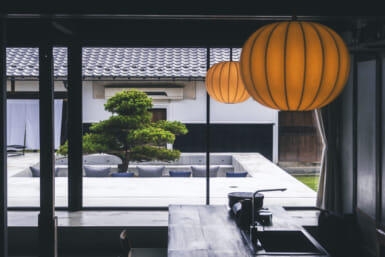My first summer in Japan, I found myself sharing an apartment with some of the most disgusting creatures on earth. They were big and ugly and kept me awake at night. When I couldn’t take the situation any longer, I decided to seek help. I trudged down to the local shopping street in the sticky heat and prowled the aisles of the Daimaru Peacock looking for weapons.
To my frustration, I realized that the labels were all in Japanese and I couldn’t decipher the pictures clearly enough to tell what I was buying. With my almost nonexistent language skills, I cornered a store clerk and proceeded to beg him for “kokurochu” spray. He was clueless as to what I wanted, and became more and more embarrassed as I desperately acted out my version of a giant scuttling cockroach. I never did get the damned spray.
Our situation at home called for more serious intervention than a can could offer anyway, so we wound up getting an exterminator through the NTT Town Pages (go to english.itp.ne.jp and type in “pest control”). In subsequent summers, we lived in housing that was not as infested as that first place, but I find that hot weather in Tokyo invariably brings the appearance of the dreaded gokiburi. Because of my unfortunate experience with cockroaches, I ended up researching their unpleasantness, and found out more than I wanted to know. These creatures are not just squeamishly gross, but also a very real health threat.
Cockroaches have been implicated in cases of salmonella food poisoning, and they have also been found to harbor staphylococcus and streptococcus bacteria. If the creatures feed on contaminated food in the kitchen garbage, the disease bacteria can remain in their digestive system for a month or more. If human food or utensils come in contact with roach feces, then there’s the chance of life-threatening illness.
Most people who are allergic to dust are also allergic to cockroaches. If you want to know more, just visit the Website run by the University of Nebraska-Lincoln Cooperative Extension Service at pested.unl.edu/cock-com.htm. You may want to check out their Cockroach Control Manual, or review their list of “Ten Questions to Ask a Pest Control Company Before Hiring.”
Once the weather turns muggy it’s a good idea to follow some of these suggestions in order to keep the bugs at bay:
• Get a kitchen trashcan with an airtight lid, keep it clean, and empty trash daily.
• Keep floors swept.
• Dispose of newspapers regularly.
• Wash dishes after each meal and keep counters, tabletops, and stove clean.
• Run the garbage disposal or empty the sink drain after each meal.
• Put a stopper in the sink before going to bed each night.
• Place flour, pasta, and cereals in sealed containers.
• Don’t collect paper bags as roaches love to lay their eggs in them.
• Try using trays of Combat poison or the Japanese equivalent, but be extremely careful with children or pets in the house.
• If the problem is out-of-control, use a professional exterminator.
A few years after the roach horror, I experienced another wicked summertime pest known as dani or dust mites. Perhaps I wasn’t as vigilant as I should have been with airing the duvet on fine sunny days. I had heard that airing one’s bedding kept dust mites away during the humid summer months; my neighbors were always out there beating the futon at the crack of dawn.
I first noticed that I woke up scratching during the night, and thought it was possibly mosquitoes. Then someone suggested bedbugs which freaked me out as sounding much too unsanitary for our home. By the time our entire family started itching, we found that mites had burrowed into the carpet, the bedding, and much of the upholstery.
The only way we were able to get rid of these mites was to set off some kind of fog bomb in the house; as the children were young, I insisted on abandoning our home for the weekend of the bombing. Evidently the only way that these mites (and the large number of droppings they produce) can be eradicated is by extreme heat or insecticides. It was recommended that we buy a certain expensive vacuum cleaner, which would also take care of the problem, but we chose the fog insecticide which did the trick.
There were several other recommendations that we tried to follow in order to remain mite-free: daily dusting and vacuuming, frequent washing and drying of all bedding (the clothes dryer heat kills them) and, of course, hanging quilts and mattresses out on sunny days. If family members are highly allergic or asthmatic, then wood floors are much better than carpet, and blinds are preferable to curtains. A new mite-resistant fabric has been developed in Japan and is used in bedding, stuffed animals, carpet, and even clothes. Look for the bodani kako label, which designates these products.
Another culprit of sauna-like weather is the mold that develops from excess moisture collecting in your home. I had never lived anywhere that had a rainy season and could not imagine that I would open my shoe closet one day to find all my shoes a fuzzy shade of pale green. You can clean most of the mold (also responsible for numerous allergies and illnesses) with chlorine spray cleaners available in the market. We also bought a couple of dehumidifiers for the large rooms, placed small moisture-collecting boxes in the dampest spots, and were amazed at how often they filled up with water!
In retrospect, I hope that no one was reading this column during a meal, but perhaps now you have some insight on coping with molds, mites, and cockroaches during the rest of your summer in Japan.









